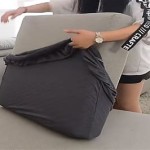How to Fix Scratches in Car Interior
Scratches on a car's interior can be unsightly and detract from the overall aesthetics of the vehicle. These scratches can occur due to various reasons, such as careless handling of objects, sharp objects slipping from pockets, or the natural wear and tear of everyday use. While significant damage might require professional assistance, many scratches can be effectively addressed with simple DIY solutions.
Assess the Scratch
The first step in fixing scratches is to assess their severity. Minor scratches, often referred to as surface scratches, only affect the top layer of the interior material. These scratches are typically shallow and visible but do not penetrate the underlying layers. Deeper scratches, on the other hand, often affect the material more significantly, potentially reaching the underlying plastic or fabric.
Cleaning the Scratch
Before attempting to repair the scratch, it's crucial to clean the affected area. Use a soft microfiber cloth and a mild cleaning solution designed for automotive interiors. This will remove any dirt, debris, or grime that might obstruct the repair process. For harder-to-reach areas, utilize a small brush or a vacuum cleaner with a crevice attachment.
Repairing Surface Scratches on Plastic
For surface scratches on plastic interior surfaces, a simple DIY solution can effectively address the problem. Consider using a plastic cleaner designed for automotive use. These cleaners are typically available at auto parts stores or large retailers. Apply a small amount of the cleaner to a soft cloth and gently rub it over the scratch in a circular motion. Repeat the process as needed, paying attention to the direction of the scratch.
If the scratch is still visible, a plastic polish can be used to further enhance the surface finish. Apply the polish to a clean cloth and buff the area gently. Remove any excess polish with a clean cloth. This process will help to smooth out the surface and minimize the appearance of the scratch.
Repairing Deeper Scratches on Plastic
For deeper scratches on plastic, a more involved approach might be necessary. A permanent marker, specifically designed for plastic, can be used to color-match the scratch. Select a marker that closely matches the color of the affected surface. Apply the marker gently over the scratch, allowing the ink to seep into the crevices.
Another option for deeper scratches involves using a plastic filler. These fillers are available in different colors and can be used to fill in the scratch. Apply the filler with a small spatula or a putty knife, smoothing it out to match the surrounding surface. Allow the filler to dry completely, then sand it down to achieve a smooth finish.
Repairing Scratches on Leather
Leather interiors require a different approach to repairing scratches. Leather conditioners are specifically designed to hydrate and nourish the leather, minimizing the appearance of scratches and improving its overall condition. Apply the conditioner to a clean cloth and gently rub it into the affected area. Allow the conditioner to penetrate the leather, then buff it to a shine.
For deeper scratches on leather, a leather repair kit can be utilized. These kits typically contain a color-matching paste and a small applicator tool. Apply the paste to the scratch, working it into the leather. Allow the paste to dry completely, then buff the area to achieve a smooth finish.
Repairing Scratches on Fabric
Scratches on fabric interiors can often be addressed with fabric cleaner and a soft brush. Apply the cleaner to the affected area and gently work it into the fabric. Allow the cleaner to dry completely, then use a soft-bristled brush to remove any residual dirt or debris.
For more stubborn scratches, a fabric dye might be necessary. Select a dye that closely matches the color of the fabric. Apply the dye according to the manufacturer's instructions, ensuring even coverage over the scratch. Allow the dye to dry completely, then test its color fastness by rubbing the area with a damp cloth.
Preventing Future Scratches
After addressing existing scratches, it's essential to take preventive measures to minimize the likelihood of future blemishes. Invest in protective accessories, such as seat covers, floor mats, and door edge guards. These accessories provide a physical barrier between the interior surfaces and potential sources of damage.
Additionally, practice proper maintenance routines. Regularly clean the interior surfaces, removing any dirt, debris, or sharp objects that could cause scratches. Avoid using harsh chemicals or abrasive materials that could damage the interior surfaces.

How To Fix Scratched Interior Panels In Your Car Holts

How To Remove A Scuff Mark Or Scratch From Your Car Dashboard
How To Remove Scratches From A Car S Interior Ifixit Repair Guide
How To Remove Scratches From A Car S Interior Ifixit Repair Guide

How To Remove Scratches From Car Interior Fantastic Services
How To Remove Scratches From A Car S Interior Ifixit Repair Guide

Here S How You Can Get Rid Of Scratched Plastic In Your Car It So Easy The Sun
How To Remove Scratches From A Car S Interior Ifixit Repair Guide
How To Remove Scratches From A Car S Interior Ifixit Repair Guide

Here S How You Remove Scratches From Your Car Interior Trim








